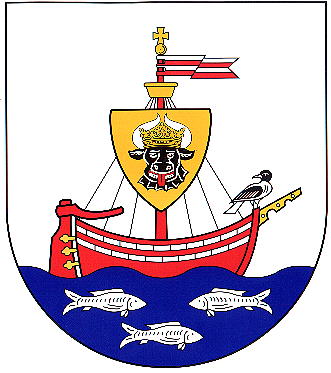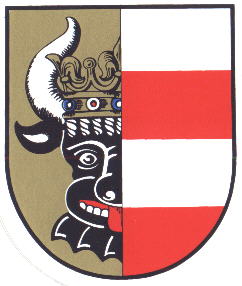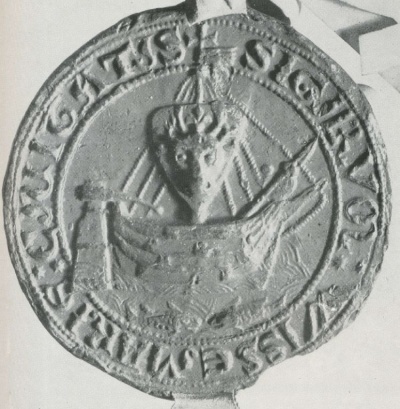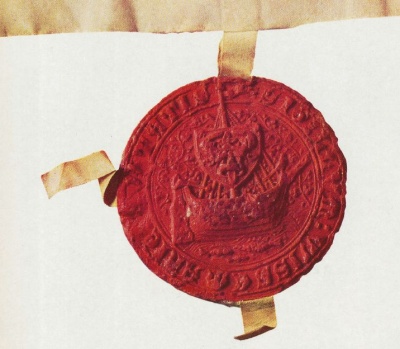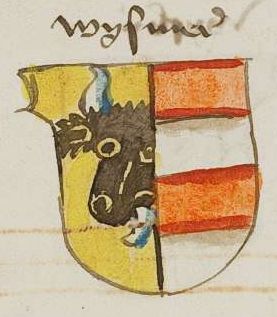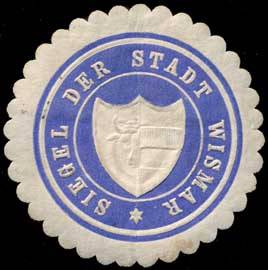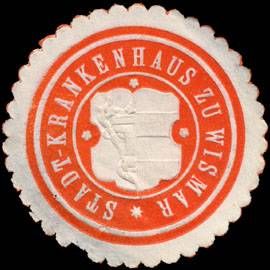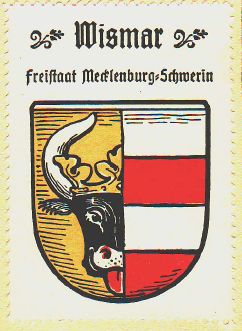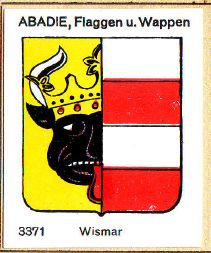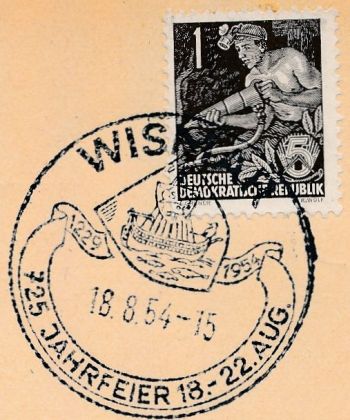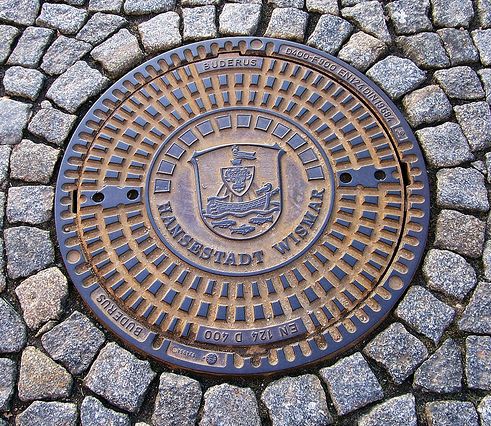Wismar: Difference between revisions
Knorrepoes (talk | contribs) m (Text replacement - " / Arms" to "/Arms") |
Knorrepoes (talk | contribs) m (Text replacement - "Literature :" to "'''Literature''':") |
||
| Line 59: | Line 59: | ||
{{media}} | {{media}} | ||
[[Civic Heraldry Literature - Germany|Literature]] : Information provided by the city of Wismar; Ewe, 1972; Bensing et al, 1984 | [[Civic Heraldry Literature - Germany|'''Literature''']]: Information provided by the city of Wismar; Ewe, 1972; Bensing et al, 1984 | ||
[[Category:German Municipalities W]] | [[Category:German Municipalities W]] | ||
Revision as of 16:11, 9 September 2022
This page is part of the German heraldry portal Deutsche Wappensammlung |
Heraldry of the World |
|
German heraldry:
|
Selected collector's items from Germany:
|
WISMAR
State : Mecklenburg-Vorpommern
Ddistrict (Kreis) : Nordwestmecklenburg (until 2011 Hansestadt Wismar)
| German | In Silber über blauem Wellschildfuß, darin drei (2:1) silberne Fische, die oberen zugewendet, der untere nach links gekehrt, eine nach links schwimmende rote Kogge mit zwei silbernen Streifen längs der Deckslinie, goldbeschlagenem Ruder und goldenem Bugspriet; am Mast eine goldene Tatzenkreuzspitze, darunter eine nach links wehende, zweimal von Silber und Rot längsgestreifte Flagge, ein goldener Mastkorb und ein goldener Schild, dieser belegt mit einem herschauenden schwarzen Stierkopf mit silbernen Hörnern, goldener Krone, geöffnetem Maul, ausgeschlagener roter Zunge und abgerissenem Halsfell, das bogenförmig ausgeschnitten ist und sieben Spitzen zeigt; auf dem Bug der Kogge eine nach links gekehrte widersehende natürliche Möwe. |
| English | No blazon/translation known. Please click here to send your (heraldic !) blazon or translation |
Origin/meaning
The arms were officially granted on June 30, 1994, but are much older.
The city of Wismar uses two different arms, the official arms as shown above, and the small arms shown below. The arms above are since 1995 the only arms used by the council, but the small arms may be used, but not for official purposes.
| The small arms of the city |
The oldest known seal of Wismar dates from around 1250 and already shows the Kogge-ship, the typical trading vessel of the time, and the principal ship of the Hanseatic League. The three fish indicate the importance of sailing and fishing for the city. The meaning of the seagull on the front of the ship is not known. The small shield on the mast shows the arms of the Duchy of Mecklenburg, to which the city belonged.
| Two 13th century seals of Wismar | |
| The oldest seal on a charter from February 20, 1353 (Rostock city archive) |
The second seal on a charter from May 19, 1361 (Lübeck city archive) |
| The arms in a manuscript from 1514 |
The seagull does not yet appear on the oldest seal (see above), but it appears on the second, 14th century, seal of the city.
The small arms only show the bull of Mecklenburg with several bars, which are likely derived from the banner of the city. These arms were widely used as official arms by the city until 1918. The seals at the same time showed still the ship. From 1918 onwards the city has used the composition from the seal as it's arms. Until the end of the DDR the field of the arms was blue, since 1995 officially silver.
| Seal from around 1900 |
Seal from around 1900 |
| The arms by Hupp in the Kaffee Hag albums +/- 1925 |
The arms in the Abadie albums |
| The arms from 1918-1995 |
Postal cancellation 1954 |
Use of the arms in the city :
| Manhole cover (source) |
Contact and Support
Partners:
Your logo here ?
Contact us
© since 1995, Heraldry of the World, Ralf Hartemink 
Index of the site
Literature: Information provided by the city of Wismar; Ewe, 1972; Bensing et al, 1984


